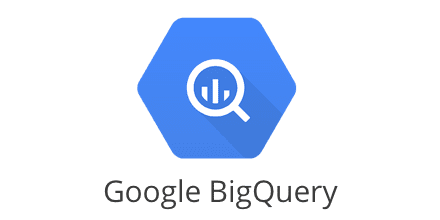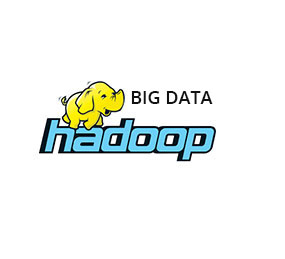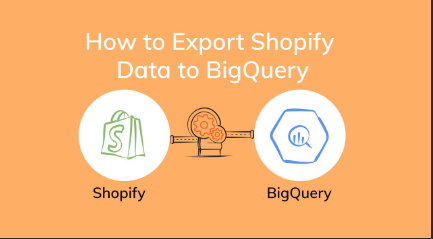Shopify To Bigquery
The Power of Data in E-commerce
In the dynamic realm of e-commerce, data is the lifeblood that fuels business growth. It reveals hidden patterns, drives strategic decisions, and uncovers new opportunities.
For online merchants, leveraging data effectively means the difference between thriving and merely surviving in a fiercely competitive market. Data transforms raw information into actionable insights, guiding everything from inventory management to personalized marketing.
Why Integrate Shopify with BigQuery?
Integrating Shopify with BigQuery is akin to connecting two powerful engines that propel your business forward. Shopify, renowned for its user-friendly e-commerce platform, excels at handling online store operations. BigQuery, on the other hand, is a formidable data warehouse that enables lightning-fast analytics on massive datasets.
By merging these two, businesses can harness the full potential of their data, gaining comprehensive insights that drive smarter, faster decisions.
Understanding the Basics: Shopify and BigQuery
What is Shopify? An E-commerce Powerhouse
Shopify is a titan in the e-commerce space, providing a robust platform for businesses to build, manage, and grow their online stores. It offers a plethora of tools for everything from product listings and order management to payment processing and customer engagement.
Its flexibility and scalability make it a go-to solution for merchants of all sizes, from budding startups to established enterprises.
BigQuery Demystified: Google’s Cloud Data Warehouse
BigQuery, part of Google Cloud Platform, is a fully managed, serverless data warehouse designed to handle and analyze vast quantities of data with unparalleled speed and efficiency. It allows users to run complex queries on large datasets without worrying about infrastructure management.
BigQuery’s powerful analytics capabilities make it an invaluable tool for businesses seeking to derive actionable insights from their data.
The Benefits of Combining Shopify and BigQuery
The synergy of Shopify and BigQuery unlocks a treasure trove of benefits. It allows businesses to consolidate their e-commerce data into a centralized repository, facilitating comprehensive analysis and reporting.
With BigQuery’s advanced querying and machine learning capabilities, merchants can uncover deep insights, optimize their operations, and tailor their strategies to meet evolving customer demands. This integration empowers businesses to become data-driven, agile, and highly competitive.
Preparing for Integration: Key Considerations
Evaluating Your Data Needs
Before embarking on the integration journey, it’s crucial to evaluate your data needs. Identify the key metrics and KPIs that drive your business decisions.
Determine the volume and frequency of data you’ll be handling, and assess how real-time analytics can benefit your operations. Understanding these requirements ensures that your integration strategy aligns with your business goals.
Understanding Data Sources in Shopify
Shopify generates a wealth of data across various touchpoints. From customer profiles and order histories to product inventories and sales reports, each dataset offers unique insights. Familiarize yourself with these data sources and their structures. Knowing where your data resides and how it interrelates is essential for effective extraction and analysis.
Setting Objectives for BigQuery Integration
Define clear objectives for your BigQuery integration. Whether it’s improving customer segmentation, enhancing inventory management, or optimizing marketing campaigns, having specific goals will guide your integration efforts. These objectives should be measurable and aligned with your overall business strategy, ensuring that the integration delivers tangible value.
Data Extraction: Gathering Your Shopify Data
Identifying Critical Data Points in Shopify
Identify the critical data points in Shopify that will drive your analytics. This includes customer information, transaction data, product details, and behavioral metrics. Each data point should be mapped to your business objectives, ensuring that your analysis focuses on the most impactful areas.
Utilizing Shopify’s API for Data Extraction
Shopify’s API is a powerful tool for data extraction. It allows you to programmatically access and retrieve your e-commerce data. Learn how to use the API to pull data efficiently, ensuring that you can automate the extraction process and keep your BigQuery data up-to-date with minimal manual intervention.
Common Data Extraction Tools and Plugins
Numerous tools and plugins simplify the process of extracting data from Shopify. Solutions like Supermetrics, Fivetran, and Stitch offer pre-built connectors that streamline data extraction and integration with BigQuery. Explore these options to find the best fit for your technical capabilities and business needs.
Data Transformation: Cleaning and Preparing Your Data
The Importance of Data Cleaning
Clean data is the cornerstone of reliable analytics. Raw data often contains inconsistencies, duplicates, and errors that can skew analysis results. Implement rigorous data cleaning practices to ensure accuracy and consistency. This involves removing duplicates, correcting errors, and standardizing formats.
Techniques for Data Transformation
Data transformation involves converting extracted data into a format suitable for analysis. This may include normalizing data, creating derived metrics, and restructuring datasets to match your BigQuery schema.
Employ techniques such as data wrangling and ETL (Extract, Transform, Load) processes to prepare your data for seamless integration.
Tools to Streamline Data Preparation
Several tools can streamline data preparation. Tools like Google Cloud Dataflow and Apache Beam offer powerful data transformation capabilities. Additionally, data preparation platforms like Alteryx and Talend provide user-friendly interfaces for transforming and cleaning data, making the process more efficient and less error-prone.
Loading Data into BigQuery: Step-by-Step Guide
Setting Up Your BigQuery Environment
Start by setting up your BigQuery environment. Create a new project in Google Cloud Platform and enable BigQuery. Configure your datasets and tables, ensuring that they are structured to accommodate the incoming Shopify data. Proper setup is crucial for efficient data loading and query performance.
Methods for Loading Data: Batch vs. Streaming
Choose between batch and streaming methods for loading data into BigQuery. Batch loading involves uploading data at scheduled intervals, suitable for periodic updates. Streaming allows for real-time data ingestion, ideal for applications requiring up-to-the-minute insights. Evaluate your business needs to determine the best approach.
Automating Data Load with ETL Tools
Automate the data load process using ETL tools. Platforms like Google Cloud Dataflow, Fivetran, and Stitch offer automation capabilities that ensure your data is consistently and accurately loaded into BigQuery. Automation reduces manual effort and ensures that your data pipeline remains robust and reliable.
Building Your Data Model: Structuring for Success
Designing a Scalable Data Schema
Design a data schema that supports scalability. Consider the relationships between different datasets and how they will grow over time. A well-designed schema facilitates efficient querying and analysis, ensuring that your BigQuery environment can handle increasing data volumes without performance degradation.
Best Practices for Data Modeling in BigQuery
Adopt best practices for data modeling in BigQuery. Use nested and repeated fields to represent complex data structures, minimize data redundancy, and optimize query performance. Partition your tables based on date or other relevant criteria to improve query efficiency and manage costs effectively.
Ensuring Data Integrity and Consistency
Maintaining data integrity and consistency is vital for reliable analytics. Implement validation checks to ensure that data is accurate and complete. Use constraints and foreign keys to enforce data relationships and prevent inconsistencies. Regularly audit your data to identify and rectify any issues.
Analyzing Your Data: Unleashing Bigquery’s Potential
Writing Efficient SQL Queries in BigQuery
Master the art of writing efficient SQL queries in BigQuery. Utilize techniques such as denormalization, materialized views, and window functions to optimize query performance. Efficient queries reduce execution time and cost, enabling faster and more cost-effective analysis.
Leveraging Big Query’s Built-In Analytics Features
BigQuery offers built-in analytics features that enhance your data analysis capabilities. Use BigQuery ML to build and deploy machine learning models directly within BigQuery. Take advantage of user-defined functions to perform complex calculations and transformations. These features empower you to derive deeper insights from your data.
Visualizing Data with Google Data Studio
Visualize your BigQuery data with Google Data Studio. Create interactive dashboards and reports that provide a clear and compelling view of your e-commerce metrics. Use Data Studio’s rich visualization options to present your insights in a way that is accessible and actionable for stakeholders.
Use Cases: Leveraging Data Insights for Growth
Customer Segmentation and Personalization
Leverage data insights for customer segmentation and personalization. Identify distinct customer groups based on purchasing behavior, preferences, and demographics. Tailor your marketing strategies and product offerings to meet the specific needs of each segment, enhancing customer engagement and loyalty.
Inventory Management and Demand Forecasting
Optimize inventory management and demand forecasting using data analytics. Analyze sales trends and historical data to predict future demand. Implement just-in-time inventory practices to reduce holding costs and prevent stockouts. Accurate forecasting ensures that you can meet customer demand without overstocking.
Marketing Campaign Analysis and Optimization
Use data to analyze and optimize your marketing campaigns. Track key performance indicators such as conversion rates, customer acquisition costs, and return on investment. Identify which campaigns are driving the most value and refine your strategies accordingly. Data-driven marketing enhances the effectiveness of your campaigns and maximizes your marketing spend.
Optimization and Maintenance: Keeping Your Data Pipeline Robust
Monitoring Data Pipeline Performance
Monitor the performance of your data pipeline to ensure it remains robust and efficient. Use monitoring tools to track data flow, detect bottlenecks, and identify errors. Regular performance reviews help you maintain a reliable and high-performing data pipeline.
Troubleshooting Common Integration Issues
Troubleshoot common integration issues to maintain a smooth data flow. Address problems such as data discrepancies, loading errors, and performance lags promptly. Implement automated alerts and error handling mechanisms to minimize downtime and ensure data accuracy.
Best Practices for Data Security and Compliance
Adopt best practices for data security and compliance. Implement encryption, access controls, and data masking to protect sensitive information. Ensure compliance with relevant regulations such as GDPR and CCPA. Regular security audits and reviews help you maintain a secure data environment.
Advanced Topics: Enhancing Your Data Strategy
Integrating BigQuery with Other Google Cloud Services
Enhance your data strategy by integrating BigQuery with other Google Cloud services. Use Google Cloud Functions for event-driven data processing, Google Cloud Pub/Sub for messaging, and Google Cloud AI for advanced machine learning. These integrations expand your data capabilities and enable more sophisticated analytics.
Implementing Machine Learning Models with BigQuery ML
Implement machine learning models directly within BigQuery using BigQuery ML. Build models to predict customer behavior, detect anomalies, and optimize business processes. Machine learning unlocks new insights and opportunities, driving innovation and competitive advantage.
Real-Time Analytics and Predictive Insights
Harness the power of real-time analytics and predictive insights. Use streaming data to gain up-to-the-minute visibility into your business operations. Apply predictive models to forecast trends and make proactive decisions. Real-time analytics empower you to respond swiftly to changing market conditions and customer needs.
Conclusion: From Data to Decisions
Recap of Key Integration Steps
Reflect on the key steps in integrating Shopify with BigQuery: evaluating data needs, extracting and transforming data, loading it into BigQuery, building a data model, and leveraging analytics for growth. Each step is critical to unlocking the full potential of your data.
The Future of E-commerce Analytics
The future of e-commerce analytics is bright, with continuous advancements in technology driving deeper insights and smarter decisions. As data analytics evolves, businesses that embrace these innovations will lead the way in delivering exceptional customer experiences and achieving sustained growth.
Encouraging Continuous Data-Driven Improvement
Encourage a culture of continuous data-driven improvement. Regularly review and refine your data strategy, embrace new tools and techniques, and foster a mindset of curiosity and innovation. With a commitment to leveraging data, your business can navigate the complexities of e-commerce and thrive in an ever-changing landscape.




